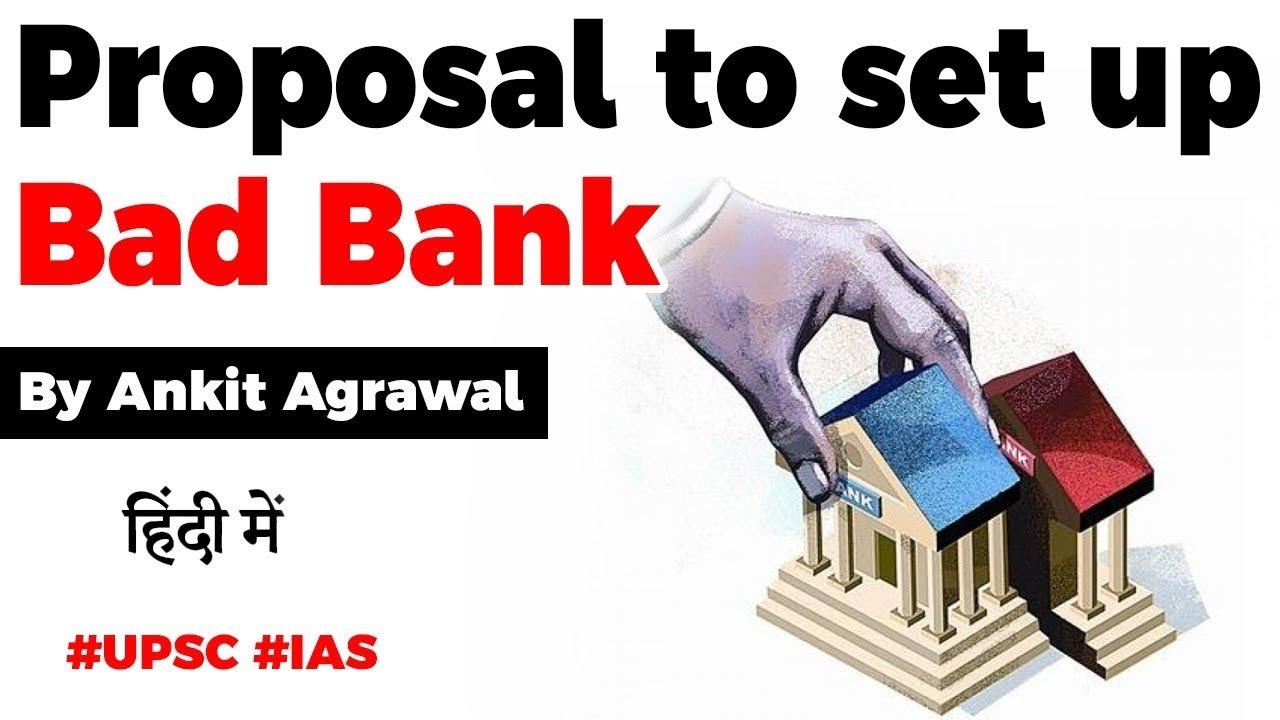Table of Contents

WHAT IS A BAD BANK?
- A bad bank is termed so simply because it houses- Bad loans, or Non-performing assets (NPAs).
- As time goes by, these loans accumulate, interest keeps getting accumulated.
- Bank X keeps providing more money against the bad exposure it took, because it realises that chances are it may never get this money back.
- One could argue that these bad loans, or NPAs could just continue sitting in Bank X’s books and that would be that.
- In practice, however, these NPAs could really hurt the bank.
- Investors, or any other counterparties, see large NPAs as a sign of the bank’s ill-health or financial weakness.
- The higher the NPAs, the more impaired the Bank X’s ability to borrow, lend, or conduct business in general.

- Bad loans can be taken out of the bank’s books and transferred to a bad bank.
- Bad banks would only serve the purpose of aiding in recovery of these risky assets.
- As a result, Bank X will clean up or deleverage its own balance sheet, reduce its exposure to risky assets, and thereby ringfence itself.
BENEFIT TO BANK X?
- A bad bank, therefore, is expected to help the banks by absorbing all their bad assets, usually at a price below the book value of these loans, and
- Manage them, in an attempt to finally recover the money over a period of time.
BUT IS THIS SO SIMPLE?
- On paper the idea is simple,
- But its implementation is more complicated – perhaps the reason why this idea has only been toyed with and not actually implement by policymakers in India.
- Though first pioneered in the US in 1988,
- The idea of forming a ‘bad bank’ in India was initially floated in January 2017 when the Economic Survey of India suggested setting up a-
- Public Sector Asset Rehabilitation Agency (PARA).
- The central bank RBI, too, came up with a suggestion to form two entities to clean up the bad loan problems ailing PSBs –
- PAMC (Private Asset Management Company)
- NAMC (National Assets Management Company).
PROS AND CONS
- Those in favour of the idea have argued that-
- Aside from cleaning up the banks’ balance sheets and making them financially healthy,
- It also allows the bank to focus on its core activity of lending, and leaves the resolution to experts.
- Former RBI Governor Raghuram Rajan was against the bad bank concept saying that-
- It created a moral hazard, enabling banks to continue with their reckless lending practices.

- As per IBA’s estimates, the ‘Bad Bank’ would require approximately Rs 10,000 crore of capital initially, which it proposes be fully provided by the government of India.
Latest Burning Issues | Free PDF






















 WhatsApp
WhatsApp